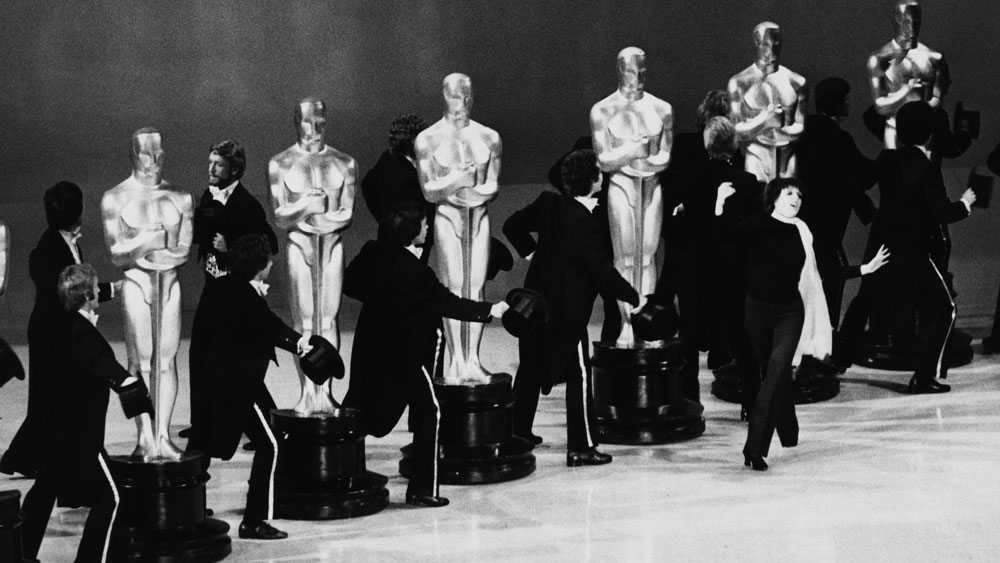
Mar 2
An Oscars Comeback? How the Film Academy Went Global and Found Its Footing Again
READ TIME: 7 MIN.
For a few years, the Oscars looked to be hanging on by a thread. Viewership was plummeting. The pandemic didn't help. And the Academy of Motion Picture Arts and Sciences, the organization behind Hollywood's biggest night, kept finding itself on the wrong side of the conversation, whether it be #OscarsSoWhite, envelope-gate, the blip that was the popular Oscar, the untelevised awards or the slap.
Then a funny thing happened: Interest started increasing both in and outside the academy. It seemed people were excited about the movies and, they hope, the Oscars again.
"It's been an amazing year for film in general," film academy CEO Bill Kramer said in a recent interview with The Associated Press. "Our art form has never been more relevant."
The scope, and wide public embrace, of the 10 films nominated for the best picture prize this year are proof. There is big studio fare, small intimate indies, two international films and two bilingual ones. And whether or not you think "Barbie" was snubbed in a few other categories, it still has people talking and debating what will happen at the 96th Oscars on March 10.
"There's a lot of great energy around the movies of 2023 and the show this year. So we're extremely hopeful and excited," Kramer said. "The show is shaping up to be remarkable."
Academy President Janet Yang chimed in that the "Barbie"-themed Jimmel Kimmel promo spot has over 35 million views, and the telecast is riding several years of ratings increases.

A Unifying Moment
After some rough patches, the Oscars may have finally met the moment. But that comes as no surprise to the academy's leaders, who have been working behind the scenes to foster this kind of evolution as they approach their 100th year. Both Kramer and Yang, who assumed their positions in 2022, are looking at the organization as a global entity. They're not on the defensive anymore, instead pushing toward the future.
"We're very unique in the sense that we represent all the disciplines of the industry. No other organization can say that," said Yang. "We feel like we are in a potentially strong leadership position to unify. ... We hear from members all the time 'How can we have more inter-branch meetings?' They just want to gather, and we can bring this."
Nearly a century ago, unification wasn't part of the plan. In fact, Louis B. Mayer got the idea to start the academy in part to counteract unionization efforts, under the pretense that it would help set standards. In reality, he envisioned the studio heads setting these standards with only their own interests in mind. Mayer's dream evaporated quickly, however, and by the 1930s, writers, actors and directors were all forming unions.
As proof of how far they've come, last year during the strikes, the academy took the initiative to host two member conversations about pressing topics: one about artificial intelligence and another about how the strikes were impacting members from traditionally marginalized communities.
"We felt that it was our responsibility," Kramer said. "And we are in a position to actually do this, to create a space for our members to have honest, safe conversations around these topics."
"It gave us a lot of food for thought," he added. "And eventually these conversations will inform perhaps policies and procedures at the academy or inspire others in the industry to think differently."

A More Diverse Academy...
The academy as a catalyst for change is not new: They have longstanding programs for helping emerging artists (Academy Gold, the Nicholl Fellowship in screenwriting and the Student Academy Awards among them). And its aggressive move to diversify its membership was in place before Yang and Kramer started, in response to #OscarsSoWhite and public exposes about its own ranks being largely older white men.
They've also taken more proactive steps in recent years to impact the industry they give awards to, including implementing the best picture inclusion standards that went into effect this year.
Now there are more than 10,500 members in the academy, representing more than 75 countries and territories. While parity is still a work in progress, 20% of members are from outside the U.S., 34% of members identify as women and 18% are from underrepresented ethnic and racial communities.
"We represent executives, editors, visual effects artists, technologists, and artisans and professionals across disciplines. ... Not everybody is singing the same notes and not everybody feels the same way. But we can bring everybody together," Kramer said. "Given the past couple of years with the pandemic, and the strikes, and to all of the topics associated with the strikes, the academy needs to remain a neutral ground for these conversations."







